emotional intelligence in leadership
The Awareness Advantage: The New Rules of Power
A science-backed guide to why emotional intelligence now beats intellectual horsepower in modern leadership.

Emotional intelligence in leadership is no longer optional; it is the operating condition for teams that must adapt, create, and survive.
This article translates the evidence into tactical guidance for leaders who want measurable influence rather than brittle authority.
Read on if you recognize the cost when the smartest person in the room isolates decisions, and if you want practical practices that shift team performance and retention.
The High Cost of Being the "Brightest Person"

The damage is measurable.
The psychological profile of intellectually arrogant leaders combines cognitive overconfidence with defensive tactics that systematically weaken organizations.
When leaders resist new information, dismiss expert input, and privilege their own viewpoint, teams exhibit clear signs of a bad leader:
- Eroded trust.
- Reduced feedback seeking.
- Higher emotional exhaustion.
This is not an anecdote; it is a measurable effect.
Research attributes almost 60 percent of top management team attitude variance to CEO arrogance, a statistic that explains why whole executive teams can stall or fracture under a single dominant presence.
The financial and engagement data amplify the human cost.
Global employee engagement slipped to roughly 21 percent, and researchers tie that decline to staggering productivity losses, quantified in the hundreds of billions of dollars.
When top leaders discount diverse input, innovation declines, and organizations experience strategic stagnation as bold moves are avoided out of fear of being wrong.
These dynamics reflect common cognitive biases in business, such as confirmation bias, overconfidence, and the arrivism effect, where title is mistaken for omniscience.
At the team level, the effect shows up as diminished psychological safety at work, which suppresses candid input and reduces creative problem solving.
Teams trapped by a leader who dominates conversation report lower morale and are less likely to take the interpersonal risks that produce breakthroughs.
Employee retention suffers, and the downstream impact touches customer outcomes and profitability. This is the cost of a leadership mindset that prizes being the smartest rather than building collective competence.
Correcting this pattern requires practices that interrupt defensive reflexes and reestablish learning loops. Leaders must convert personal credibility into relational authority, inviting challenge and structured dissent so the organization can recover speed, creativity, and measurable performance.
The Science of Real Influence: Your Brain on Empathy

How empathy rewires influence.
Empathy is not soft; it is hardwired.
Mirror neurons activate when individuals perform actions and when they observe others performing similar actions, creating a neural basis for shared attention and coordinated responses.
Higher-order systems such as the anterior insula integrate these automatic signals with interoceptive awareness, allowing leaders to notice bodily sensations that reflect emotional tone while still maintaining cognitive perspective.
This integration produces calibrated responses instead of reactive reflexes, which matters in high-pressure interactions.
Human nervous systems continually scan for safety cues through social neuroception. A leader who models regulation reduces threat signaling across the team, enabling others to access prefrontal functions required for complex reasoning and creative problem solving.
Researchers use the metaphor of a tuning fork to describe this effect: leader regulation modulates group arousal and increases collective cognitive bandwidth.
Those neural shifts map to measurable business results. Multiple datasets connect emotional intelligence in leadership with higher profitability, improved productivity, and lower turnover in organizations that prioritize relational skills.
Talent research highlights that top performers generally score higher on emotional intelligence and produce substantially greater productivity than peers, creating a material lift for organizational performance metrics.
Psychological safety at work expands because people feel invited to speak up without fear, and decision cycles accelerate when leaders practice regulated attention and empathetic listening.
Adopting a leadership mindset that centers on regulation and empathic practice, therefore converts physiological influence into tangible performance gains:
- Faster decision cycles
- Richer feedback loops
- Improved employee and customer outcomes.
The Four Traps of Unawareness: Which One Are You?
Four professional blind spots.
The Intellectual Dominator uses knowledge as a tool to assert dominance.
They discount advice, privilege their own answers, and amplify confirmation bias. Teams under this archetype reduce feedback seeking and show measurable declines in psychological safety, which limits learning and increases turnover.
The Anxious Perfectionist sits in tension between high competence and deep self-doubt.
Research indicates that about 43 percent of leaders experience imposter feelings, which drive preparation paralysis and chronic decision delay.
These leaders often protect themselves through overpreparation and by deflecting credit, patterns that slow momentum and obscure accountability.
The Reactive Conformist favors similarity and recent experiences, producing affinity bias and recency bias that squeeze out diverse viewpoints.
This pattern produces groupthink and reduces the organization’s ability to surface early warning signs, making it harder to adapt to novel challenges.
The Disconnected Executive succumbs to arrivism and hubris syndrome, becoming isolated from operational truth and less likely to seek corrective feedback.
Across industries, this archetype fuels disengagement because employees feel unheard and leaders lose contact with the realities that shape strategy.
Each archetype aligns with known cognitive biases in business and demands tailored remedies to restore openness, feedback seeking, and adaptive learning.
Your Action Plan: Three Steps to Building the Awareness Advantage
Three practical paths to awareness.
Step one: nervous system regulation.
Practice box breathing before high-stakes encounters. Inhale for four counts, hold for four counts, exhale for four counts, hold for four counts.
This protocol shifts autonomic balance toward parasympathetic activation, often improving heart rate variability within minutes and producing calmer, more present leadership.
Step two: somatic awareness and structured reflection.
Conduct brief body scans to surface interoceptive signals before major decisions, then run After-Action Reviews using four focused questions:
- What was planned
- What actually occurred
- Why differences existed.
- And what to change next.
Mindfulness-based leadership training produces sustained gains in task management, self-care, and relating to others, and regular practice correlates with stronger perceived effectiveness in follow-up evaluations. These routines answer the practical question of how to improve self-awareness by tying experience to data.
Step three: advanced feedback integration and behavioral experimentation.
Use targeted 360 assessments to gather external perspectives, ask one specific feedback question in each cycle, and adopt a weekly “one thing” rule where you practice a single observable behavior change.
Couple this with daily reflection logs and short behavioral experiments to convert insights into repeatable habits. Over time, these practices lift psychological safety at work by modeling accountability and normalizing adjustment, producing measurable changes in engagement and retention.
Emotional intelligence in leadership is a strategic capability with defined neural mechanisms and measurable organizational returns.
Correcting intellectual arrogance and the cognitive biases in business that sustain it produces gains in trust, creativity, and financial performance.
Leaders who commit to regulation, focused reflection, and tight feedback cycles move from brittle authority to influence that scales.
Which archetype most constrains your leadership today, and what single practice will you begin this week?
About the Author
Andre Swart is a respected leader in Brackenfell real estate with over 20 years of results-driven experience. Through his platform, “Andre Swart Inspires,” he moves beyond simple property sales to share the proven mindset, strategies, and habits that build lasting success.
Grounded in integrity, Andre’s mission is to mentor the next generation of top agents and provide homeowners with the trusted guidance they deserve.
